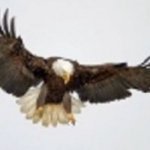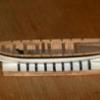-
Posts
635 -
Joined
-
Last visited
Reputation Activity
-
 CDR_Ret reacted to Keith Black in 1880's Floating Steam Donkey Pile Driver by Keith Black - FINISHED - 1:120 Scale
CDR_Ret reacted to Keith Black in 1880's Floating Steam Donkey Pile Driver by Keith Black - FINISHED - 1:120 Scale
Thank you to all for the kind comments and the likes.
Thank you, Gary. My order arrived yesterday and I'm very pleased. The windows are spot on and of good quality. I've yet to try the glazing as I need to paint the windows first which is the next step.
Thank you, Keith and Eberhard. I think people have a need to make things with their own hands, we've been doing so since we learned to make fire. IMHO 3D printing is going to enable modelers to make even more believable builds hence forth. 3D printing is the future. They're now 3D printing brain tissue for God's sake!
https://cureepilepsy.org/news/revolutionary-3d-printed-brain-tissue-mimics-human-function/#:~:text=A team of University of,vertically%2C the researchers went horizontally.
I haven't posted in five days which is an eternity with this little build. As mentioned above I received the windows, I also received the Vallejo red paint. A big thumbs down on the paint, way too orange.
The shed walls are made and glued together but are not glued to the deck. I still need to paint and glaze the windows and paint the shed before installing the windows. As far as the windows go, they're four over four which was the most common of the time period. All the windows in our 1869 house are four over four. The windows are probably more suited for a house instead of a shed but the length will allow a little more light into the shed once the roof is on.
Regarding the roof, it'll be a pitched roof with a drum line tower opening. The shed's rear door is about 0.38 inches, the two front doors will each be 0.48 inches open with card hinges.
The friction drum line story is still a mystery. I might have the line loosely wrapped around the Donkeyman's arm or have the line tied around a cleat just inside the left front shed door. What I do know is, this 3 x 6 inch footprint is starting to get a wee bit cramped!
The next phase is to get the inside (white) and outside (Apple Barn Red) of the shed painted, the windows and doors installed, and the friction drum line story finalized.
Please excuse the next two out of focus photos of the Steam Donkey inside the shed but it does give an idea of how much inside the shed is going to be visible
The rear door is temporally set in the jamb. I need to make card hinges then the door will be opened to the tank side.
Thank you to everyone for taking the time to visit and lending your support.
Keith
-
 CDR_Ret reacted to Danstream in P-51D Mustang by Lt. Biggles - FINISHED - Eduard - 1/48 - PLASTIC
CDR_Ret reacted to Danstream in P-51D Mustang by Lt. Biggles - FINISHED - Eduard - 1/48 - PLASTIC
I am following with interest, I am probably the kind soul that enjoyed a discussion with @Egilman about this subject 🙂. I am sorry, but, with all respect, I need to comment few details about the description above, for the sake of precision. Definitely, aircraft from 1940 did not have the blowing systems described above. In addition, the blowing, sometimes referred as 'supercirculation' is not intended to reduce skin friction drag, but its purpose is to delay flow separation (hence to reduce the so called form or pressure drag) and not to maintain laminar boundary layer. Few example that I can easily remember that had this system (at the leading edge of the flaps) were the F-104 and the British Buccaneer, both having extremely high wing loading and the need to fly at high angle of attack at low speed. At very high speed, or at cruise, the angle of attack is very small and the blowing is not needed.
Coming back to the Mustang, it had wings equipped with so-called 'laminar wing sections' that are sections studied by NACA displaying a shape that produced a favorable pressure profile which, in turn, delayed the natural transition from laminar to turbulent boundary layer. These were the 6-digits designation profiles like, for example, the NACA 654-415. North American did not implement strictly a NACA section but rather an in-house developed profile obtained by the same mathematical theory that NACA used for their 6-digits. The results and the mathematical theory were published by NACA and industries were made aware of them. The reduction of surface drag was completely passive and it was intended to increase the range or the top speed (which are closely interlinked).
A bit of theory now. When air (or any fluid) flows over a smooth aerodynamic surface, it always starts as laminar. For high speed, after a very short distance, the boundary layer switches from laminar to turbulent, but this doesn't imply that the flow is detached. Flow is still attached, it follows the surface, but within the boundary layer, very close to the surface (for high speed we are talking of several mm) the flow doesn't follow parallel, ordered streamlines. With laminar sections, the region were the flow is laminar is stretched further back towards the trailing edge. The larger proportion of laminar over turbulent results, everything else being the same, in a smaller skin friction drag.
(from: NACA Quest for Performance: The Evolution of Modern Aircraft, very interesting document, with little math that can be found on line)
However, laminar boundary layers have also their negative points and one of the most important is that the flow is more prone to detach from the surface. Turbulent boundary layers are instead more robust and follow better the surface (see the paradox of the golf balls that with dimpled surface fly further than smooth balls). When the flow detaches from the surface, the form drag greatly increases. Sometimes, the laminar B.L. detaches and shortly after reattaches to the surface with a turbulent B.L.
Often, it is desirable to have a turbulent B.L. because it follows better the curved surface of fairings (as in a golf ball) and rear portion of wings, especially in the areas where ailerons are located (I am sure you can remember aircraft having vortex vanes along the leading edge in front of the ailerons). The matter is governed by the numerous trade-offs and compromises that are at the base of the system design.
In conclusion: Mustang had laminar sections to increase range and/or top speed. They worked with low angle of attack (or low lift coefficient which is the same thing). To work well, the surface of the wing needed to be smooth (see also included plot) and this was the reason for puttying rivets and gaps. However, it is also reported that small imperfections (like smashed insects or paint chipping) were responsible for having areas where the laminar B.L. switched to turbulent B.L. partly vanifying the purpose of these profiles.
I am sorry for this long explanation, but the subject is not completely trivial and it is difficult to explain it in a succinct way, but a lot of sources are available on the web. I am particularly passionate about this subject that was part of my studies. I could provide reference textbooks to anyone interested to go deeper and I will be glad to discuss any comment or clarifications you might have.
Best regards,
Dan
-
 CDR_Ret reacted to herask in Type VIIC german U-boat 3D model
CDR_Ret reacted to herask in Type VIIC german U-boat 3D model
by the time I got to conning tower I've already created all the materials needed. it was just a matter of assigning them appropriately...
and for the rest of the objects I could just reuse the same materials over and over...
and that's about it. hope you like it. here's one for the end, an old vintage photo of the sub waiting for food delivery somewhere in open waters... 🤣
...and one in black and white, just for the giggles...
cheers, guys!
-
 CDR_Ret reacted to herask in Type VIIC german U-boat 3D model
CDR_Ret reacted to herask in Type VIIC german U-boat 3D model
okay, before texturing I've organized things a bit more, merged and grouped some stuff together, and added weight sag to wires to make them look less fake...
and that's it... maybe not historically accurate but nevertheless quite good looking, I'd say I'll cover materials creation next...
-
 CDR_Ret reacted to ccoyle in Hello everyone in MSW
CDR_Ret reacted to ccoyle in Hello everyone in MSW
Welcome aboard! One of our members shared some thoughts on jumping directly into the 1st rate waters.
There are lots of quality kits available these days that depict smaller men-of-war, e.g., cutters, schooners, gun brigs. Still plenty of guns and rigging, but on a scale more conducive to beginner success.
-
 CDR_Ret reacted to Captain Vytautas in Hello from Lithuania
CDR_Ret reacted to Captain Vytautas in Hello from Lithuania
Hello, modelers around the world!
I am a new builder from a small and beautiful country - Lithuania. Looking forward to this hobby as it seems calming and interesting, especially for long and dark evenings that are right around the corner in autumn.
Some time ago I bought my first ship model kit - Polaris by Occre. I have started building it, but then, of course, the lack of time kicked in. Now I feel that I have more time, also my big new work table is on the way to my house, so I want to continue my build. I have photos from the beginning of the building and also I have lots of questions so I am going to start the build log. Hope to receive the feedback!
Vytautas
-
 CDR_Ret got a reaction from mtaylor in Porsche Carrera GT by CDW - FINISHED - Tamiya - 1:12 Scale - PLASTIC
CDR_Ret got a reaction from mtaylor in Porsche Carrera GT by CDW - FINISHED - Tamiya - 1:12 Scale - PLASTIC
We rode out Cat 5 Hugo in North Charleston back in '89. No storm surge for us but the wind took off all the pines 40 feet above the ground like a chain saw. No power for nearly three weeks.
Praying for you folks down there.
Terry
-

-
 CDR_Ret reacted to wefalck in Help identifying anything about this ship?
CDR_Ret reacted to wefalck in Help identifying anything about this ship?
I have done a bit of colour adjustment in Photoshop to get rid of the yellow tint and the murkiness:
I think the flag looks red-yellow-red ...
-
 CDR_Ret reacted to CDW in Porsche Carrera GT by CDW - FINISHED - Tamiya - 1:12 Scale - PLASTIC
CDR_Ret reacted to CDW in Porsche Carrera GT by CDW - FINISHED - Tamiya - 1:12 Scale - PLASTIC
First light assessment is okay. Lots of limbs and branches down. Gazebo went by by. No major damage. Neighbors west and south of here did not fare well. Storm surge over 8’ flooded many. Bridges are shut down this morning. We have already started our cleanup. By tomorrow we will be back in business. Others will need more time. Lots of debris for contractors to pick up. That will take weeks to happen. Too much for regular pickups to handle.
-
 CDR_Ret got a reaction from Canute in Porsche Carrera GT by CDW - FINISHED - Tamiya - 1:12 Scale - PLASTIC
CDR_Ret got a reaction from Canute in Porsche Carrera GT by CDW - FINISHED - Tamiya - 1:12 Scale - PLASTIC
We rode out Cat 5 Hugo in North Charleston back in '89. No storm surge for us but the wind took off all the pines 40 feet above the ground like a chain saw. No power for nearly three weeks.
Praying for you folks down there.
Terry
-
 CDR_Ret got a reaction from Egilman in Porsche Carrera GT by CDW - FINISHED - Tamiya - 1:12 Scale - PLASTIC
CDR_Ret got a reaction from Egilman in Porsche Carrera GT by CDW - FINISHED - Tamiya - 1:12 Scale - PLASTIC
We rode out Cat 5 Hugo in North Charleston back in '89. No storm surge for us but the wind took off all the pines 40 feet above the ground like a chain saw. No power for nearly three weeks.
Praying for you folks down there.
Terry
-
 CDR_Ret got a reaction from Old Collingwood in Porsche Carrera GT by CDW - FINISHED - Tamiya - 1:12 Scale - PLASTIC
CDR_Ret got a reaction from Old Collingwood in Porsche Carrera GT by CDW - FINISHED - Tamiya - 1:12 Scale - PLASTIC
We rode out Cat 5 Hugo in North Charleston back in '89. No storm surge for us but the wind took off all the pines 40 feet above the ground like a chain saw. No power for nearly three weeks.
Praying for you folks down there.
Terry
-
 CDR_Ret got a reaction from CDW in Porsche Carrera GT by CDW - FINISHED - Tamiya - 1:12 Scale - PLASTIC
CDR_Ret got a reaction from CDW in Porsche Carrera GT by CDW - FINISHED - Tamiya - 1:12 Scale - PLASTIC
We rode out Cat 5 Hugo in North Charleston back in '89. No storm surge for us but the wind took off all the pines 40 feet above the ground like a chain saw. No power for nearly three weeks.
Praying for you folks down there.
Terry
-
 CDR_Ret got a reaction from Jack12477 in Porsche Carrera GT by CDW - FINISHED - Tamiya - 1:12 Scale - PLASTIC
CDR_Ret got a reaction from Jack12477 in Porsche Carrera GT by CDW - FINISHED - Tamiya - 1:12 Scale - PLASTIC
We rode out Cat 5 Hugo in North Charleston back in '89. No storm surge for us but the wind took off all the pines 40 feet above the ground like a chain saw. No power for nearly three weeks.
Praying for you folks down there.
Terry
-
 CDR_Ret reacted to CDW in Porsche Carrera GT by CDW - FINISHED - Tamiya - 1:12 Scale - PLASTIC
CDR_Ret reacted to CDW in Porsche Carrera GT by CDW - FINISHED - Tamiya - 1:12 Scale - PLASTIC
My gazebo flew away, into my neighbors back yard just a few minutes ago.
-

-

-
 CDR_Ret reacted to ccoyle in Messerschmitt Bf 109E-7/Trop by ccoyle - FINISHED - Halinski/Kartonowy Arsenal - 1/33 - CARD - Werner Schröer's 'Black 8'
CDR_Ret reacted to ccoyle in Messerschmitt Bf 109E-7/Trop by ccoyle - FINISHED - Halinski/Kartonowy Arsenal - 1/33 - CARD - Werner Schröer's 'Black 8'
Good eye! What's really weird (other than the odd location of the part in the diagrams) is that there was a "cut out" symbol on the part that 2d gets glued to -- which in retrospect seems kind of pointless.
Anyways, here's the finished pedals and duct work. This stuff will largely be invisible on the finished model.
And here's why it will be largely invisible.
One new option in the E-7 kit compared to the older E-4 is the option for glazed instruments, which I have included for this model.
-
 CDR_Ret reacted to catopower in Are there better tools for drilling tiny holes?
CDR_Ret reacted to catopower in Are there better tools for drilling tiny holes?
I think it's kind of funny how this thread has gone from the OP asking about his pin vise, to recommendations of drill presses.
Personally, like Chuck, I am very happy using a pin vise. My preferred variety is the swivel headed type. Quality varies with these things. My go to is one sold by ModelCraft Tools. I have a few of them, with each set up with a common drill bit size, so I can swap pin vises without having to change the drill bits all the time. In any case, I have no trouble using drill bits as small as #80.
I have drill presses, and there is a place for the power tools, but nothing replaces the ease of use of a basic pin vise.
-
 CDR_Ret reacted to Jim Brady in USS Oklahoma CIty CLG-5 (1971) 3D CAD model
CDR_Ret reacted to Jim Brady in USS Oklahoma CIty CLG-5 (1971) 3D CAD model
Thank you Phillip, for helping to bring back some great memories of serving on a Cleveland Class Cruiser. Although I did not serve on the Okie, I was fortunate to be assigned to the USS Springfield CLG 7. I was assigned to the Flag Marine Allowance to serve Vice Admiral D.L. Mc Donald Commander of the Sixth Fleet from March 1962 to May 1963. Your drawings and details are amazing. I am glad I was able to find your post. I will continue to follow now I know how to find it.
Jim Brady
-
 CDR_Ret reacted to Dr PR in Joe Harbour
CDR_Ret reacted to Dr PR in Joe Harbour
Welcome!
If you are going to build a grand banks fishing schooner I strongly recommend getting Howard Chapelle's The American Fishing Schooners 1825-193 (W. W. Norton & Company, New York and London, 1971). It has an amazing amount of information about these vessels and a 370 page "Notebook" (Appendix) with drawings and details from real fishing schooners. It will help you understand how these boats were built and rigged.
-
 CDR_Ret reacted to Keith Black in RRS Discovery 1901 by gak1965 - 1:72 - First Scratch Build
CDR_Ret reacted to Keith Black in RRS Discovery 1901 by gak1965 - 1:72 - First Scratch Build
George, the quote below is from an MSW build log, post #17, see link. Evidently black antifouling paint was available in 1901,
Posted September 20, 2016 (edited) "According to an old textbook on marine engineering (Steinhaus, 1870), antifouling paints were available at that time in a variety of colours, including reddish brown, green, black, white, yellow, and blue. Basically, you just add the pigment of your choice. Their biocide effect was based on inorganic lead and in particular copper compounds. Concerns over heavy-metal contamination in harbour muds and the search for a higher efficacy led to the development of tin-organic compounds. However, these are being phased out since the 1990s, when it was discovered that they act as 'endocrine disrupters', meaning that they lead to malformation in aquatic animals that come into contact with them. The problem is that antifouling paints not only act toxic to things that want to stick to a ship's bottom, but slowly wear off (which is part of the antifouling process) and become dissolved or settle in particles in marine sediments. Here their toxic or endocrine disruptive actions continue. I believe in more recent years antifouling paints put more emphasis on non-stick properties and slow wasting that detaches whatever tries to held a foothold.
I gather red(dish brown), green, and black were generally preferred colours, because these resemble the appearance of either coppered or tarred ships bottoms. Muntz-metal bottoms would have looked yellowish to green-greyish, depending on their age. The Austrian navy actually used a pinkish paint on their iron and steel hulls before WW1, btw.
Appart from being a waste of money, paint may not stick very well to copper because of the oxide layer that forms rather quickly on its surface. The picture in the first post is not very clear and I don't know anything about the vessel in question, but would it be possible that a protective sheathing of wood was applied on top of the coppering for travelling in areas where there was floating ice ? This sheathing in turn may have been painted."
-
 CDR_Ret reacted to Thukydides in Historical plans via CAD to laser cut parts - Practicum
CDR_Ret reacted to Thukydides in Historical plans via CAD to laser cut parts - Practicum
I am no expert, but the main issue when working from historical plans is faring your hull. In 2d this is possible, but much harder. In 3d you can get it to show the loft to help with faring.
-
 CDR_Ret reacted to irtmks in PTSD Therapy?
CDR_Ret reacted to irtmks in PTSD Therapy?
Hello,
I am sure many of you all have started this modeling journey for many varied reasons. Mine might be a little different.
When I was a young fellow, many years ago, I was in the Coast Guard working Drug Enforcement, Search & Rescue & Recovery in Jamaica, Haiti, and Cuba. I ended up my time with missing body parts and what the VA calls Extreme PTSD. Later in life I worked internationally as an engineer, I am sure that I chose this specific occupation for the solitary lifestyle it afforded. I worked and lived in over 43 countries, I initially retired very early (50) after extended experiences in China relating to many, many prisoner executions (While building factories) all occurring over a few year period. Now retired, I actively search ways to,..... well lets just say adjust and survive!
A year or so ago, my wife (who plays Mandolin) thrust a guitar in my hands, and told me to "learn how to play it." I had always been keen on instrument repairs, but had never actually played. I soon found that the complexity, beauty, and peacefulness of this instrument allowed a kind of therapy that I had not known before. Flashbacks, Daymares, did not occur while engaged. We now play everyday. I have started teaching Guitar at ASU, a program for Veterans with Brain Trauma.
You see, because of work choices, events, lifestyle, etc. I have never really been "part" of much. Other than my wife, I have worked alone, lived alone, without much in the way of social activities (including Internet Forums, HaHa).
I have a background in Guitar and instrument building and repair, I have always enjoyed the micro-world of precession woodworking. I lived onboard our Hunter Sailboat for nearly two years. We have both found the peace of "The Water's solitude."
So not sure how it popped up, but, somehow this Forum happened upon my screen? I did not search it, did not request it, did not click on an add for it???? Am not sure, but I think I was searching for miniature slot files for making Guitar nuts, maybe??
Anyway, before I could control myself, I had signed up, and had ordered a Lowell Dory model. So here I am, Just in the hours of reading and planning, I have found possibly a new "Tool" in my PTSD toolbox. My mind has been consumed with modeling and thus the "bad" stuff keeps away.
Thank you ALL for what you do here, and know that what you do maybe a bit "more" for some of us, than just a hobby!
Thanks









